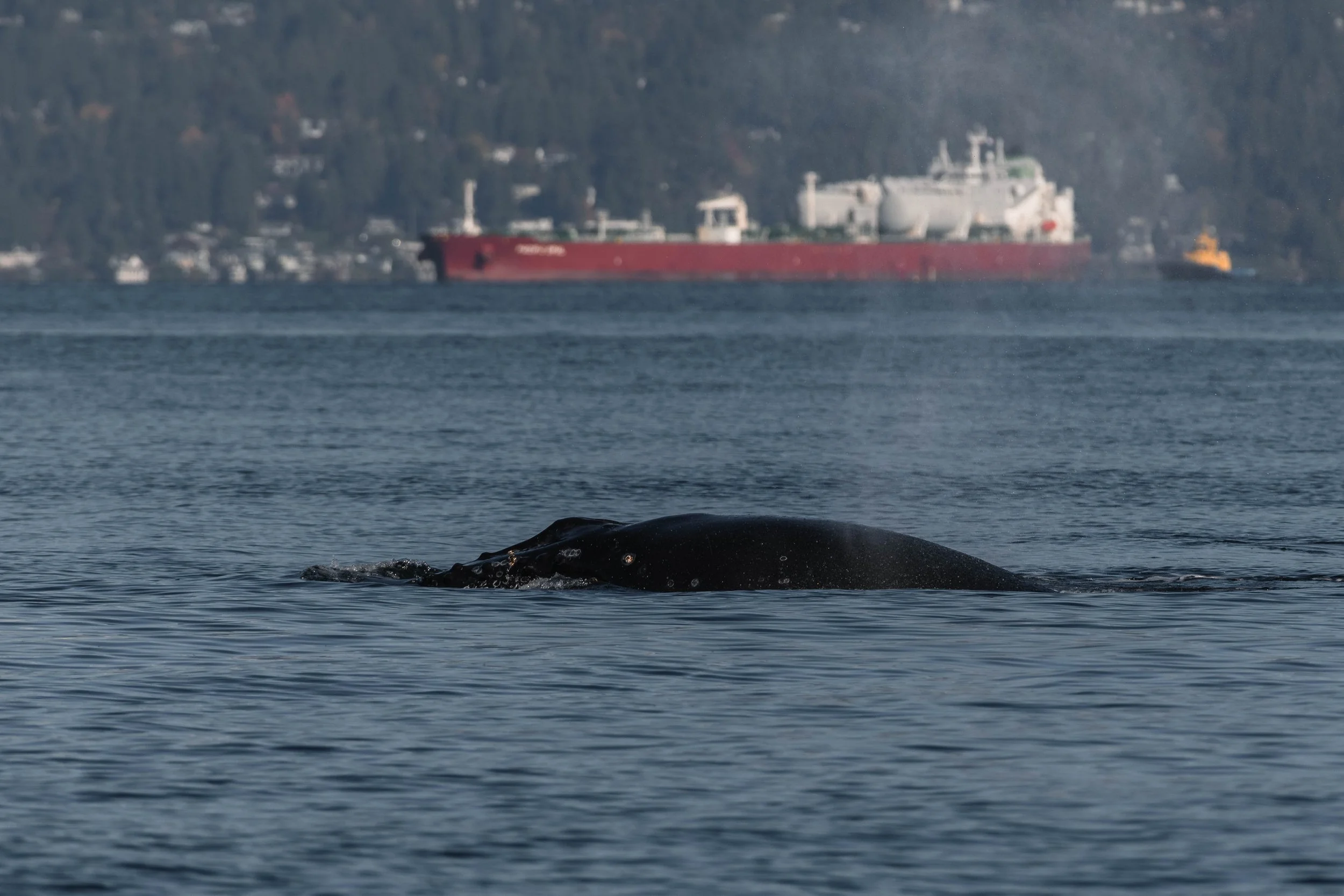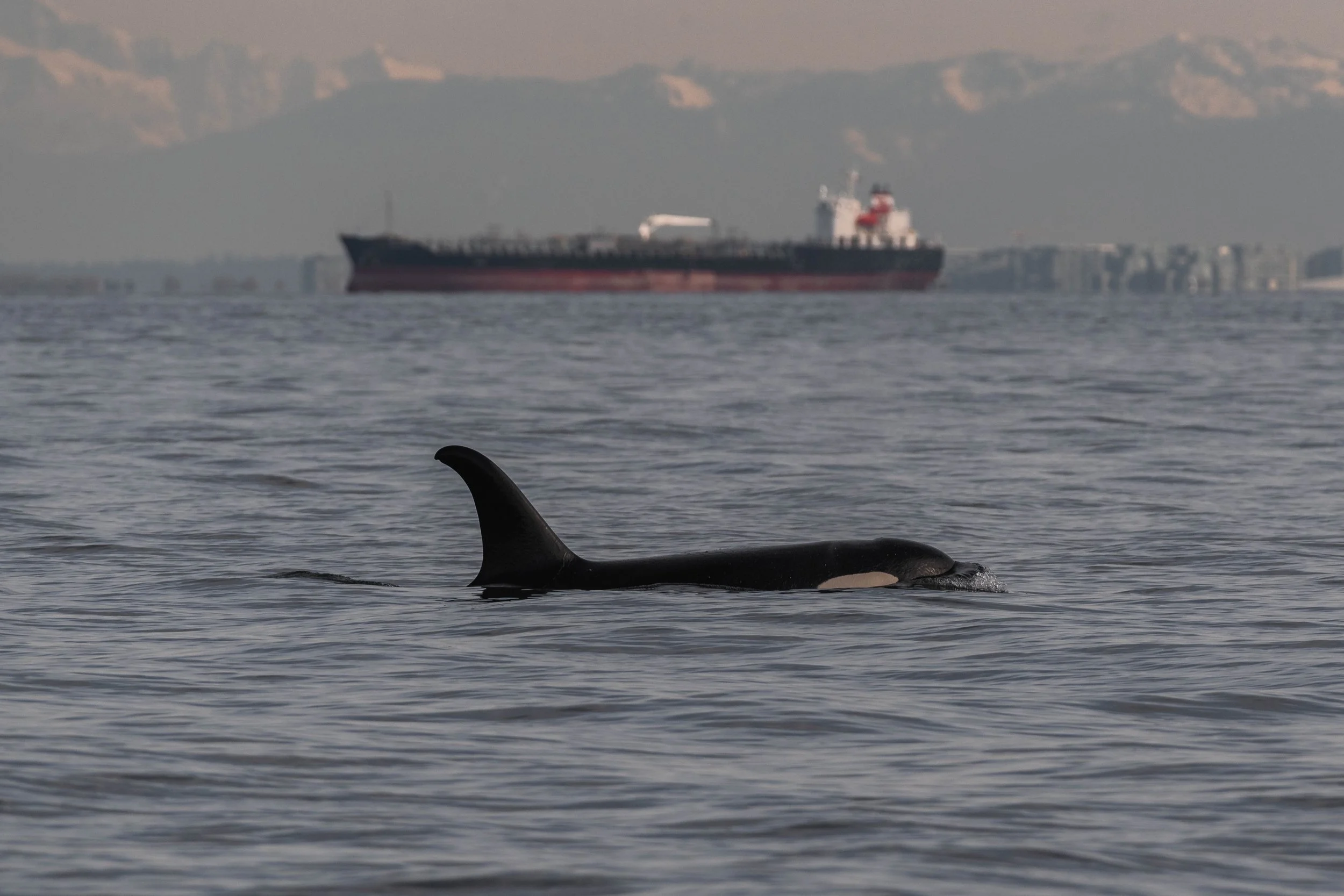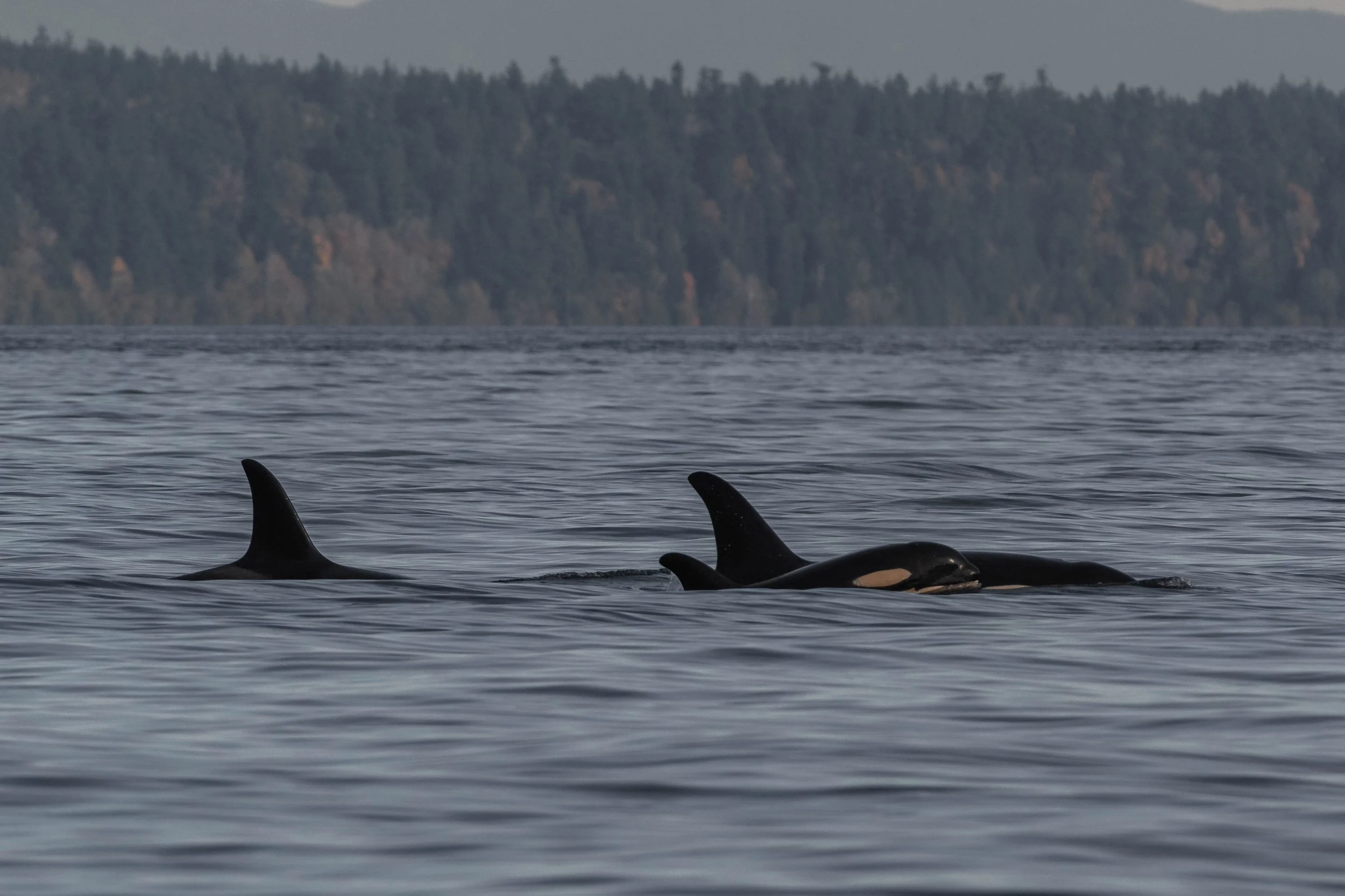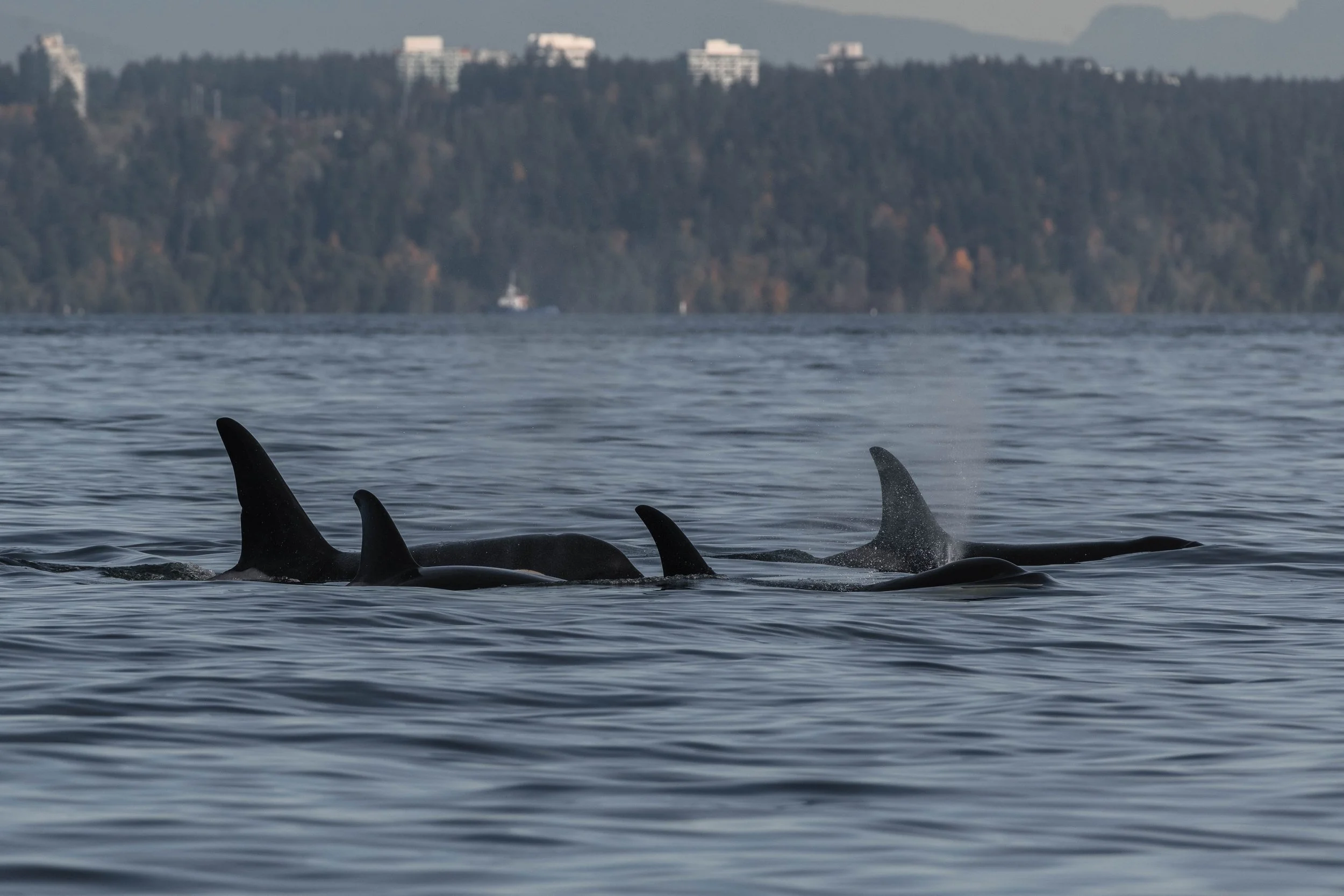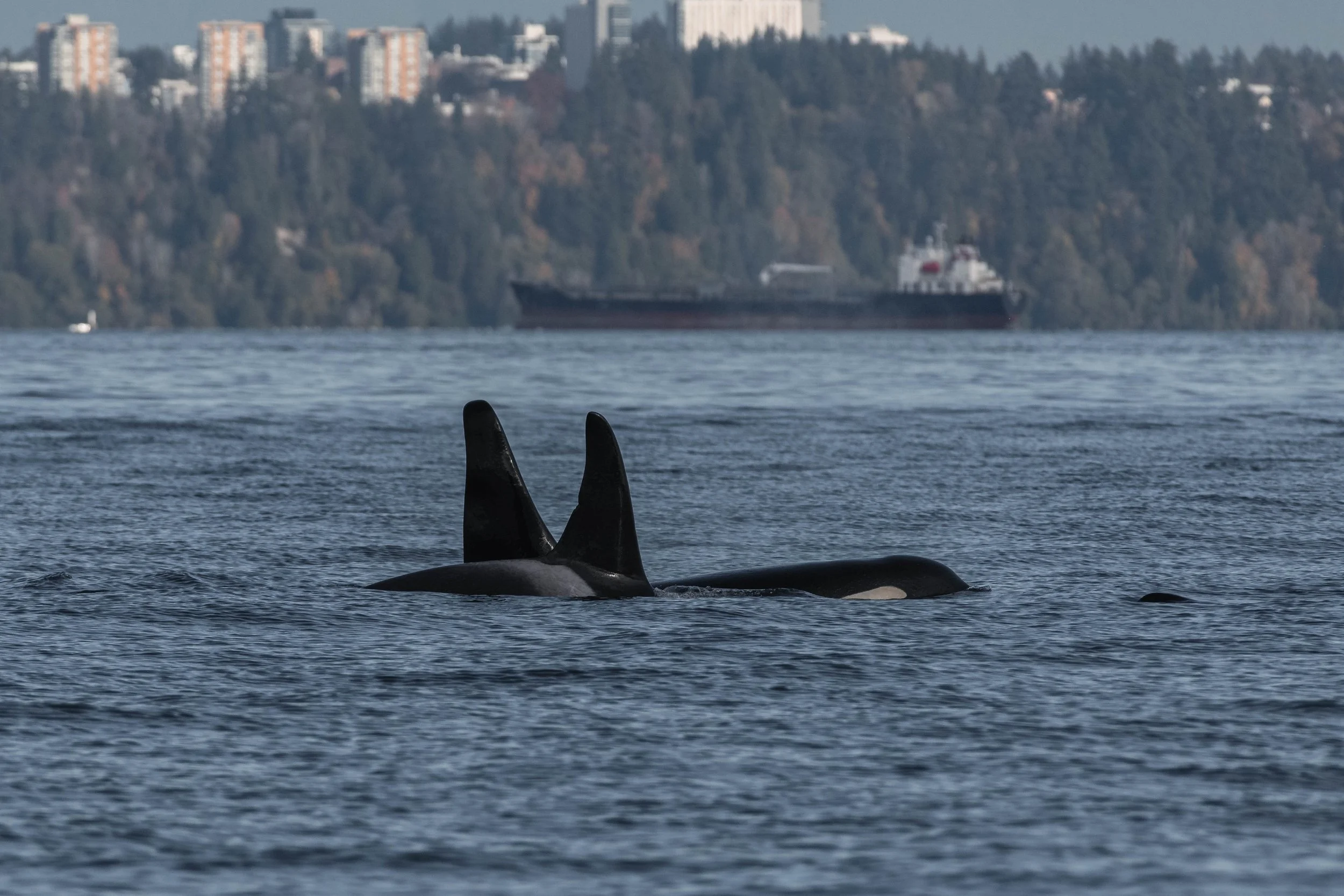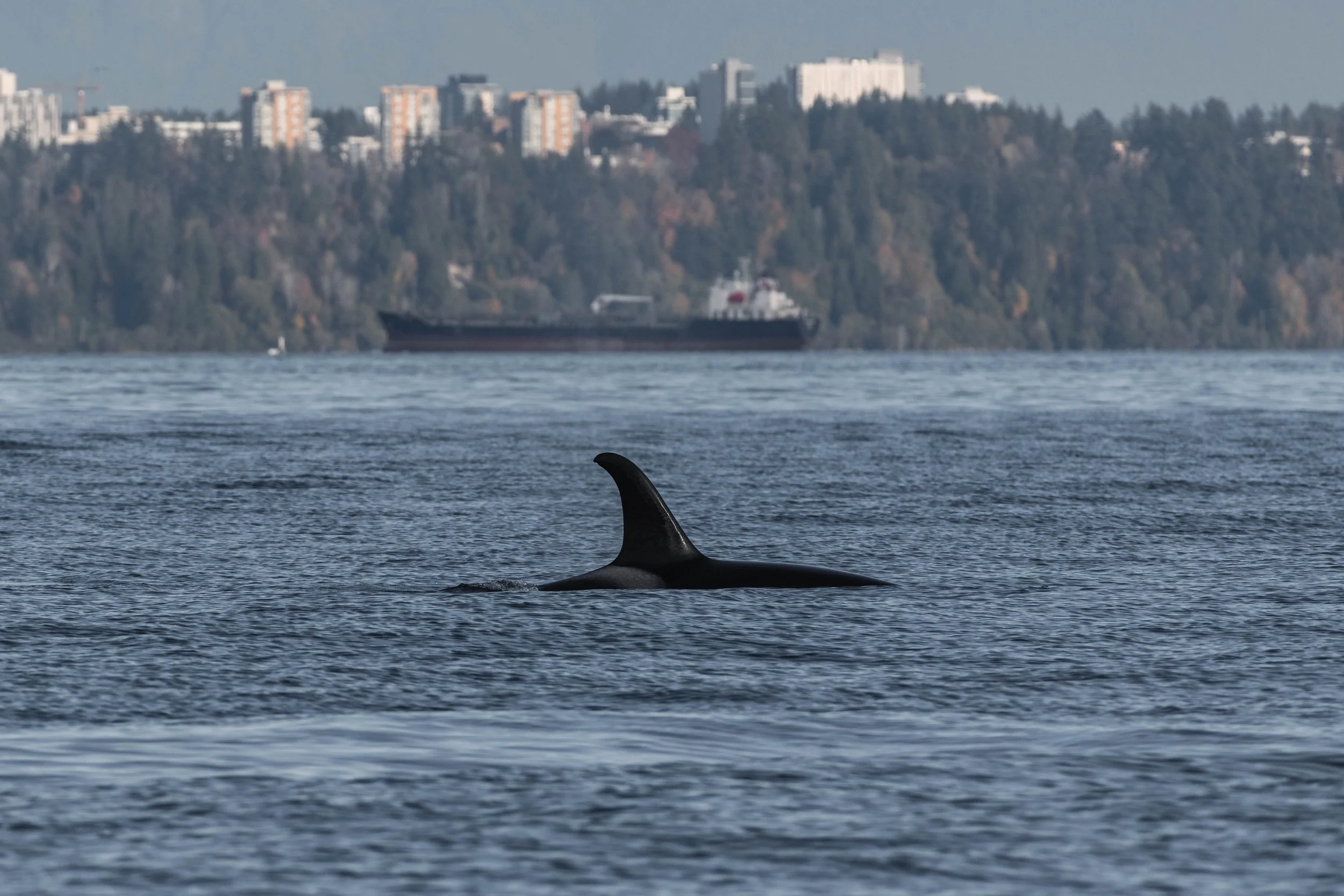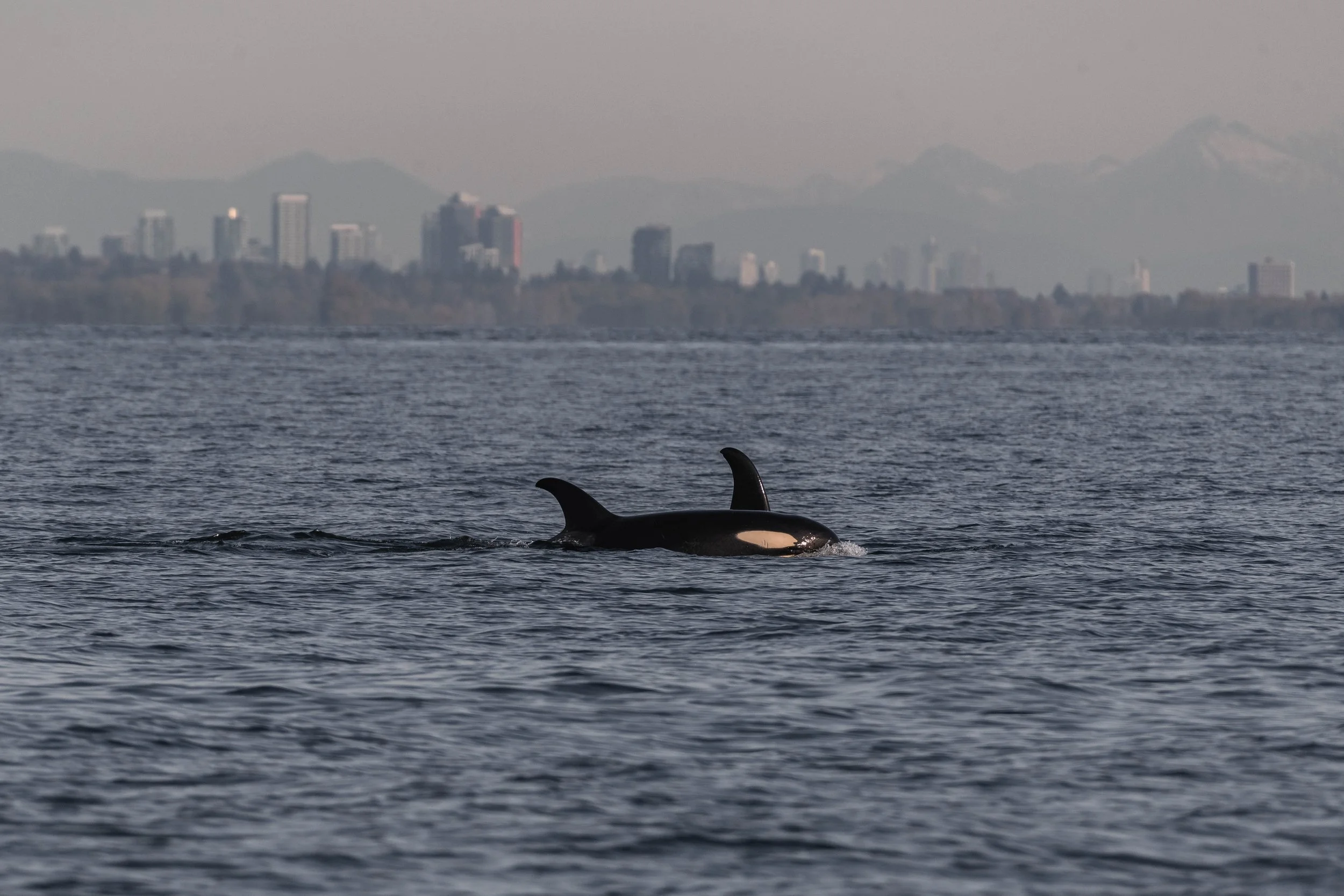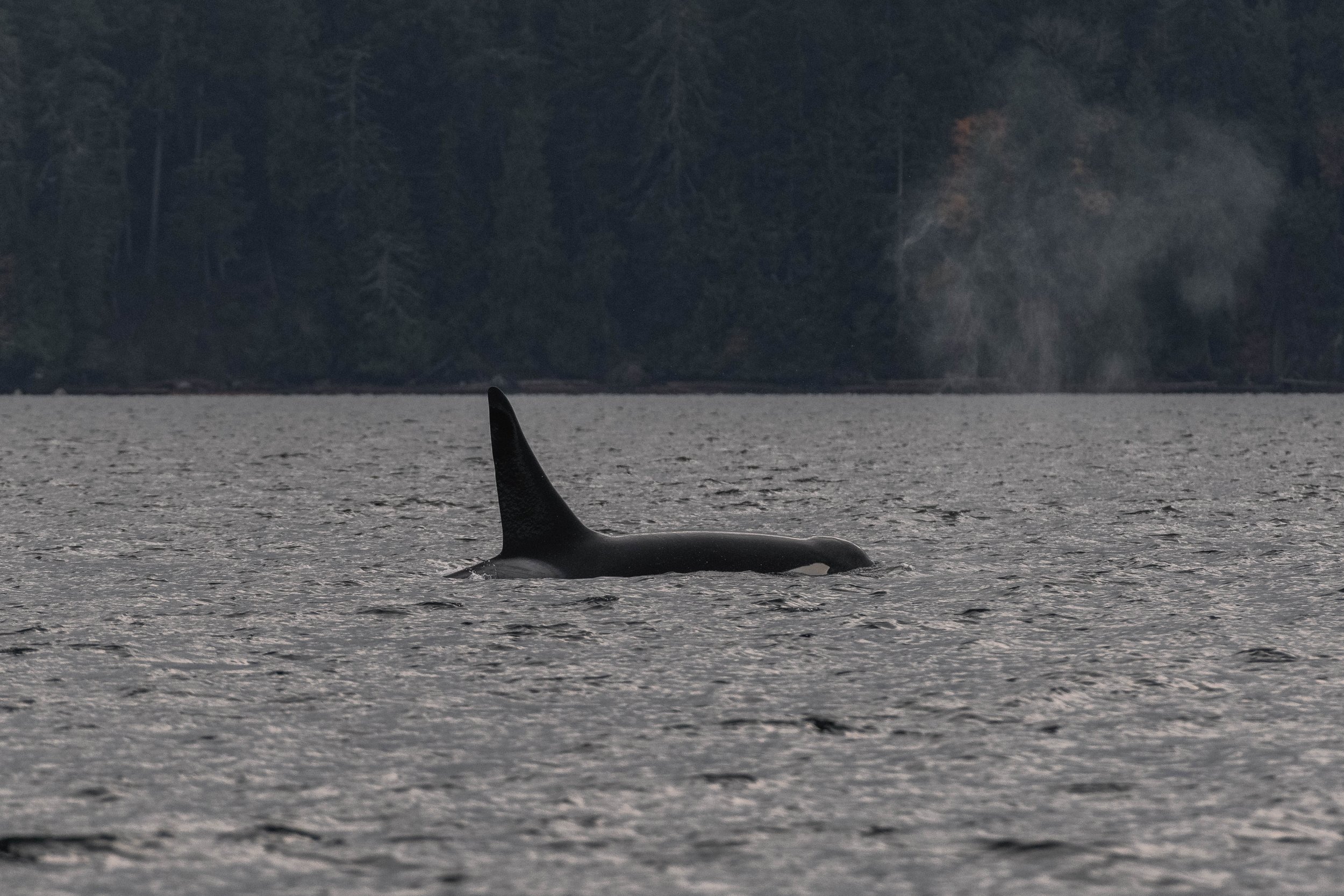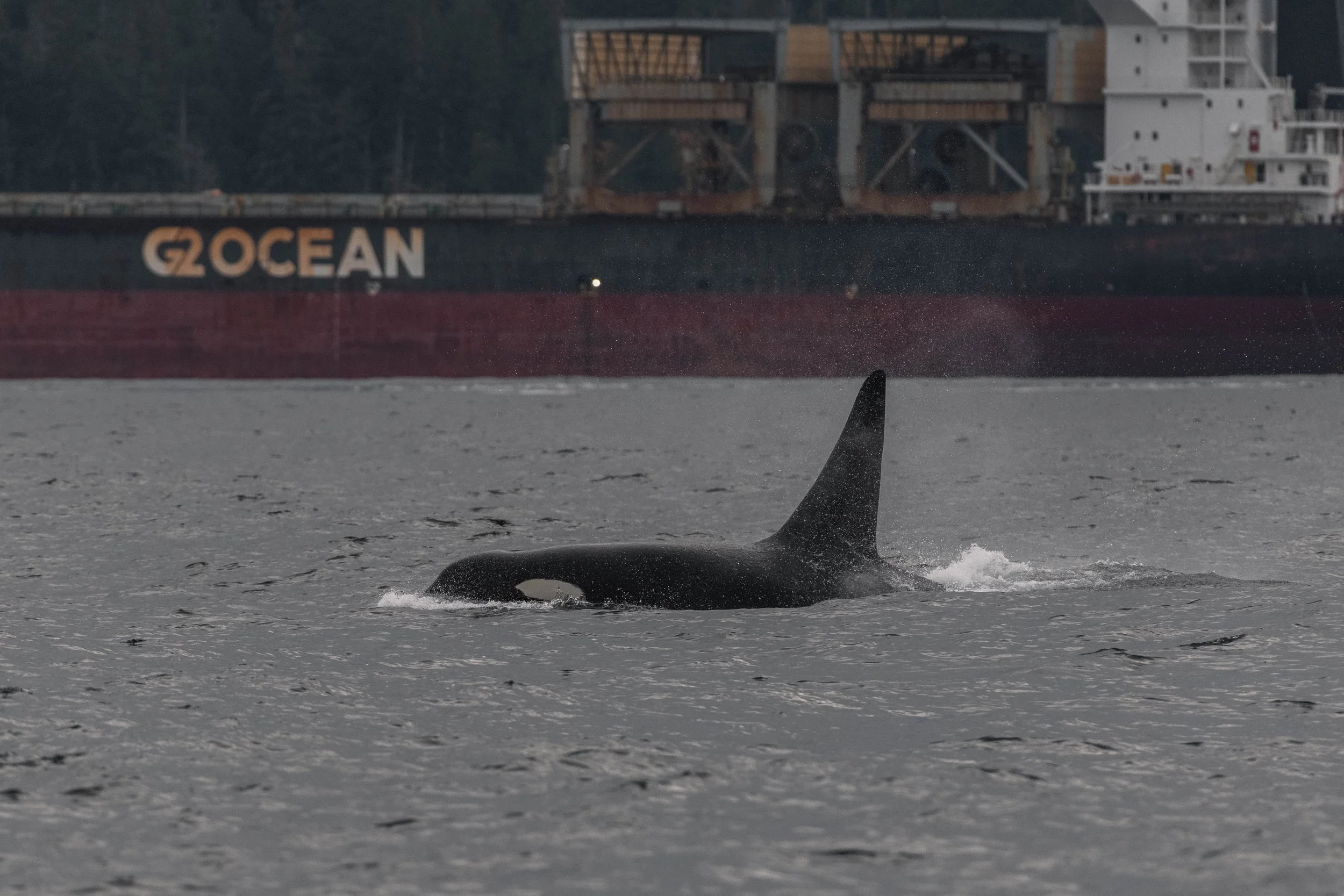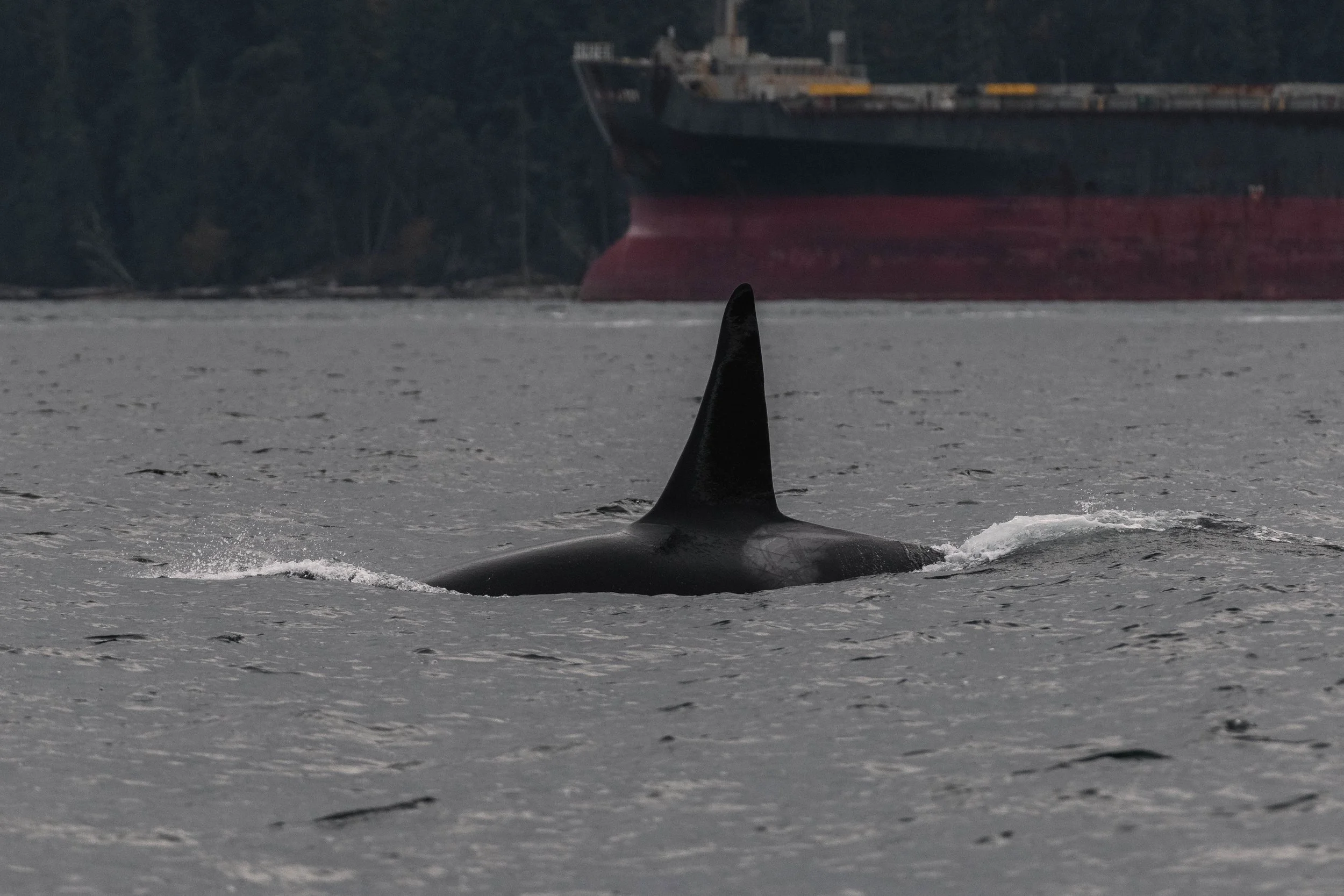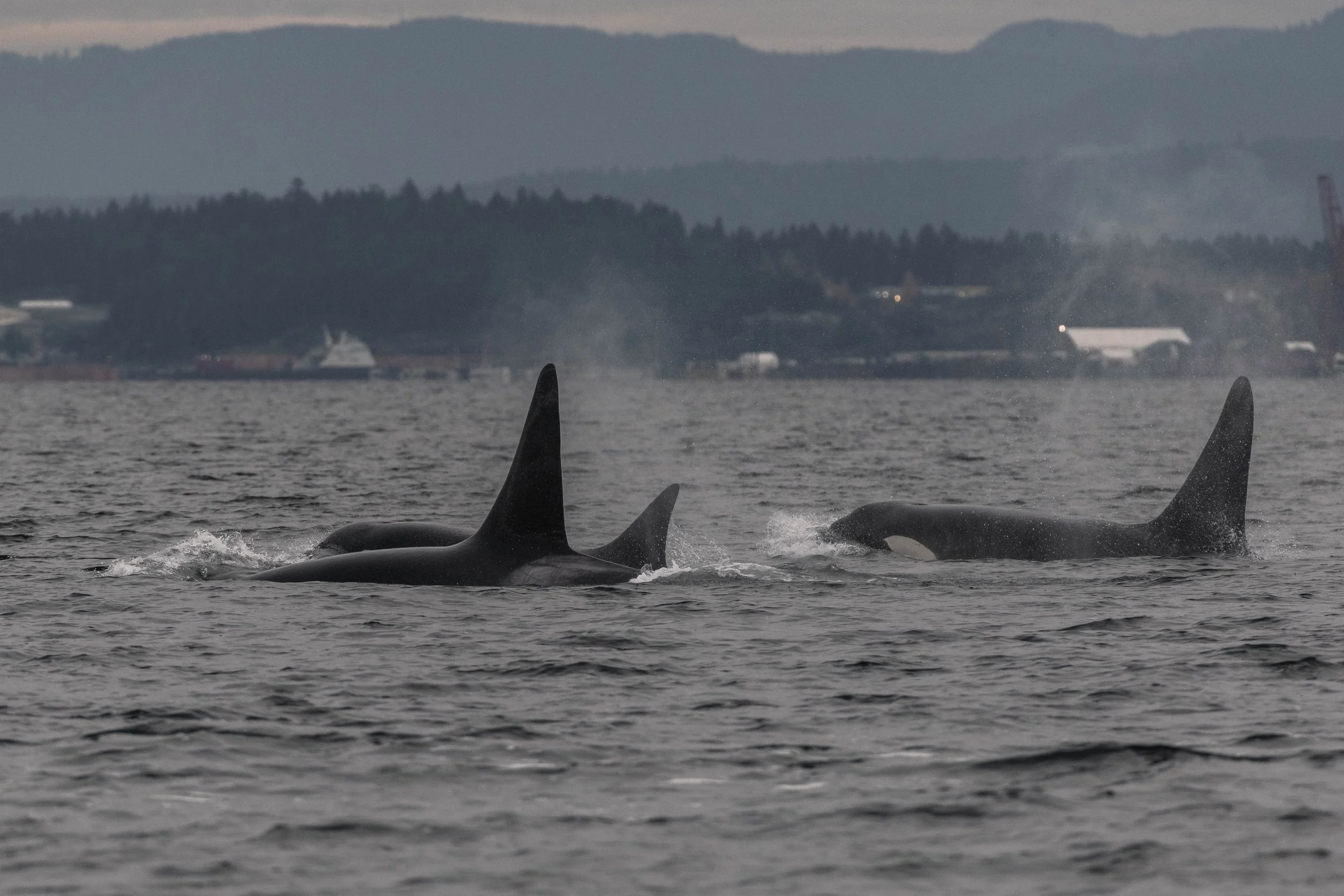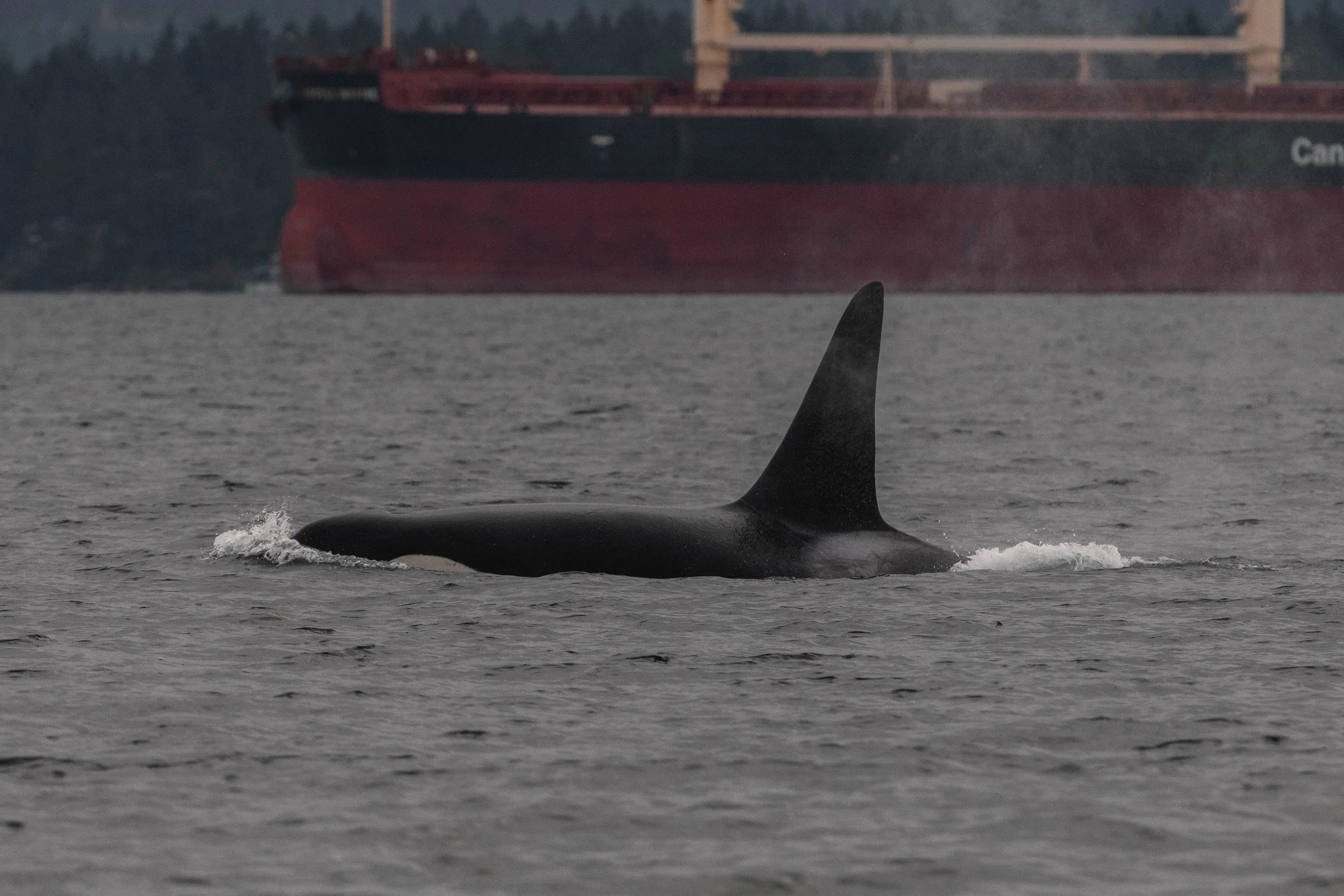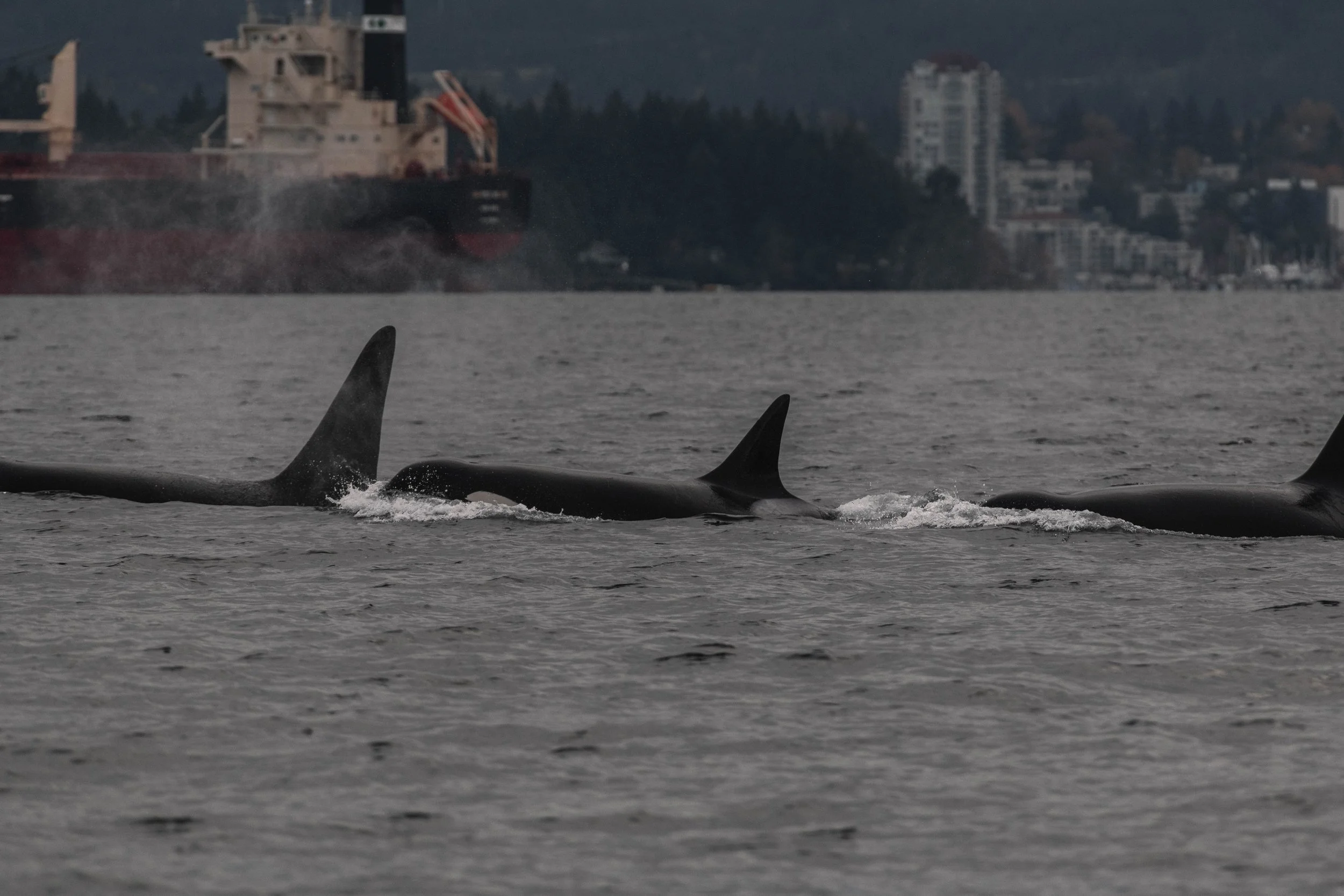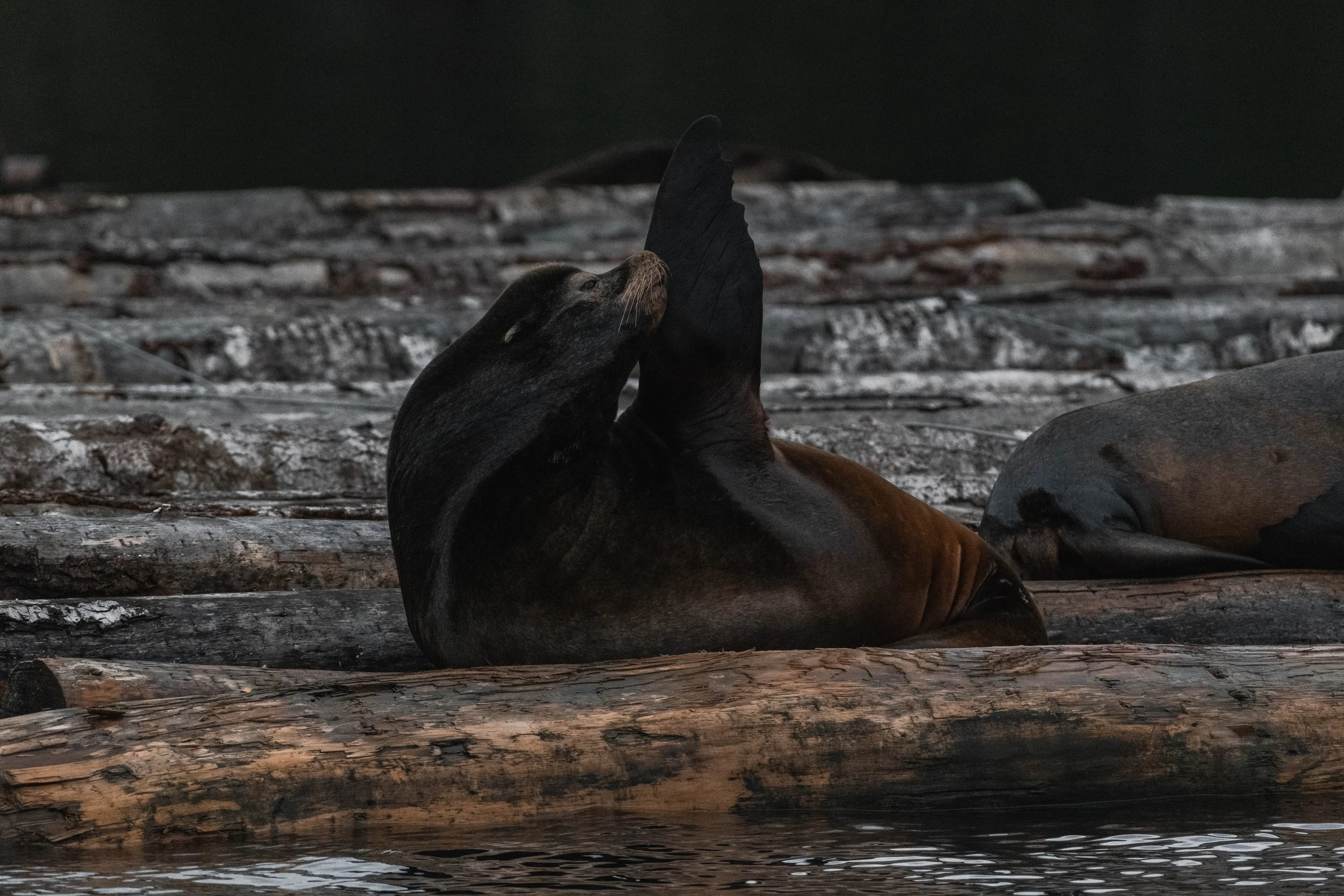November 4, 2025 - Triple Species day! Humpbacks, Northern Resident Orca, and Transient Orca in one trip!
Another exciting day awaited us on the Salish Sea, and we were buzzing with excitement as we climbed aboard the semi-covered vessel, Kula. We ended up encountering three different types of whales on the water today: Humpback Whales, Northern Resident Killer Whales (NRKW), and Transient Killer Whales!
The first encounter was with the humpbacks, and they were very familiar fins: Valiant (BCX1773) and her 2025 calf. Valiant is a well-known individual in our waters, having been spotted since her birth in 2017. She is easily identifiable thanks to the scarring on her tail. She was attacked by orca when she was younger, with the whales using their teeth to grab her tail in an attempt to drown her, and her tail still bears the scars of this. Luckily, she and her mother, Split Fin, must have done a good job fighting off the orca attack since Valiant is still with us. Since then, this 8-year-old whale has developed a bit of an attitude towards orca, as she should have. Now that she is nearly fully grown, the orca don't stand a chance in hunting her, and she doesn’t let them off too easily either. She is often observed partaking in the “Orca vs Humpback brawls” that we have witnessed a few times during our time on the water, apparently holding a grudge. A few whales are known more than others to get involved with stopping orca from having fun or feeding, but Valiant is the most obvious as to why she might be doing it!
The next two encounters were with the orca, starting with the Northern Residents. Seeing northern residents in our range is a relatively rare occurrence, although the 2025 sightings might suggest otherwise. Typically, their range is focused on the waters north of Campbell River. The group that we were lucky enough to see today is the exception to this. They seem to have developed a fondness for the waters around Howe Sound and Vancouver, with sightings as far south as Active Pass. There are a couple of things that might be drawing them here. With restoration in place in Howe Sound, there might be enough fish present to draw the whales here. With a growing population of NRKW, they might be starting to expand their range south. Or perhaps with the Southern Resident Killer Whales (SRKW) populations decreasing, there is now an open niche in these waters that the NRKW could be filling.
A25s
A61 Surge ♂ (1994)
A85 Cordero ♀ (2005)
A121 Twilight ♂ (2019)
A42s
A42 Sonora/Holly/Uma ♀ (1980)
A79 Current ♀ (2004)
A119 Venture ♀ (2018)
A135 (2024)
A88 Cameleon ♀ (2008)
A88 calf (2025)
A103 Albion (2013)
A114 Ashlar (2017)
A94 Mystery ♂ (2009)
Now reading this, you might be wondering how one population of the fish-eating residents can be increasing while the other is decreasing, and that is a great question. While prey abundance has been reported to be similar in the main ranges of these two populations, there are a few differences in the southern waters that would make things more difficult for the SRKW. The primary difference is the volume of shipping traffic in the south compared to the north. With increased shipping comes increased noise, and since these whales rely on echolocation and vocal communication as essential parts of their hunting, the presence of ships may affect them more than other populations. There is also more development in the south, affecting not only important spawning rivers for their food, the salmon, but it would also introduce more potential toxins into the water, which would end up concentrating in the orca thanks to bioaccumulation. The Biggs (or Transient) orca are also affected by this, especially since they feed at higher trophic levels than the residents do. These reasons likely don’t completely explain why the NRKW are an increasing population while the SRKWs are now Critically Endangered, but they do provide some insight.
The last population of whales that we spotted today was another healthy group: Transient Orca! These whales are the mammal-eating ecotype, primarily focusing on Pinnipeds like seals and sea lions, although other cetaceans can also be on their menu. This is why this population is thriving right now, since they have an abundance of prey. Seal and Sea Lion populations are very steady in the Salish Sea, and since they are more generalistic in their food preferences, they aren’t as affected by a change in one of their prey species. For example, if the Steller Sea Lion abundance in the area were to drop suddenly, there would likely still be plenty of Harbour Seals, Harbour Porpoises, and California Sea Lions to choose their meals from. While we watched these whales, identified as the T101s, they didn’t hunt, but we saw plenty of evidence of their food being around, so we knew they could if they wanted to.
T101 Reef ♀ (≤1969)
T101A Rush ♂ (1993)
T101B Lagoon ♂ (1997)
Their food was actually our last stop, getting to see the California Sea Lions lounging on the Log Booms near Nanaimo. With so many options for food around, people often wonder why the transient orca don’t spend all of their time close to the haul-outs, enjoying the smorgasbord of snacks that they would have access to. It’s a pretty easy answer: the seals and sea lions are too smart for that! If orca spend too much time hunting the same group of pinnipeds, the pinnipeds realize they are all being eaten and become much harder targets. This is why orca are constantly on the move, heading to places that they can catch their food unsuspecting them, keeping their success rate very high.
Today, it was an amazing experience to see all the different types of whales and spend time with them. The onboard Marine Naturalist, Aly Kohlman, captured some great photos throughout the trip, all of which are available below.
Valiant’s calf surfacing on it’s own.
Valiant (right) sufacing next to her calf (left).
Valiant diving with her calf arching for a dive beside her.
A42 Sonora/Holly showing off her beautiful saddle patch.
A42 Sonora/Holly surfacing in the front, with A114 Ashlar just behind her.
A94 Mystery surfacing in the calm waters.
A79 Current surfacing with calf A135 beside her, and Mt. Baker in the background.
A great look at A79 Current.
A88 Cameleon and her new calf surfacing together just ahead of A85 Cordero.
A94 Mystery, A114 Ashlar, A42 Sonora/Holly, and A88 Cameleon surfacing together.
The two older boys, A61 Surge and A94 Mystery surfacing together.
A79 Current surfacing in the calm waters.
From left to right we have the tip of A61 Surge’s dorsal, A88 Cameleon, A114 Ashlar, A103 Albion, A79 Current, and A42 Sonora/Holly surfacing togther.
A79 Current ahead of A88 Cameleon and her 2025 calf.
A79 Current is so photogenic!
A42 Sonora/Holly waking up the rest of the group with a tail slap.
A135 surfacing beside A79 Current.
T101B Lagoon surfacing in the waves.
T101B Lagoon showing off his saddle patch.
T101B Lagoon showing off his eye patch.
A great look at the scarring on T101B Lagoon’s saddle patch.
Family photo with T101B Lagoon closest, T101 Reef in the middle, and T101A Rush furthest away.
T101A Rush surfacing in the waves.
Family photo with T101 Reef flanked by her sons (T101A Rush in the front, T101B Lagoon in the back.).
A California Sea Lion resting on the log boom.
An Itchy California Sea Lion.

